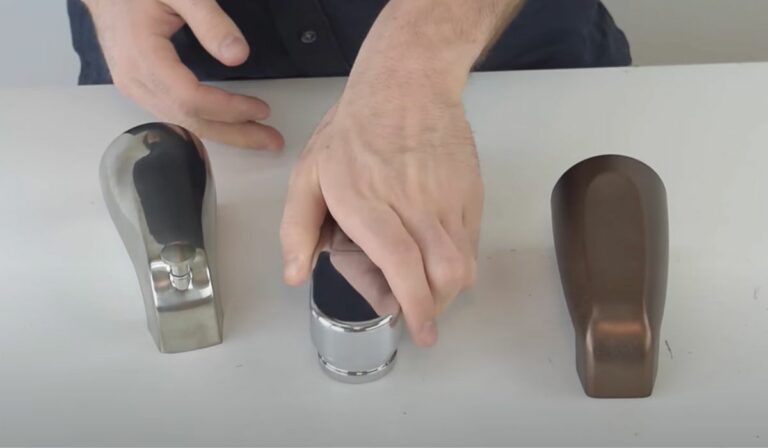How To Use A Basin Wrench
Mastering the use of a basin wrench can transform those frustrating plumbing jobs under your sink into manageable, even quick repairs. Whether you’re a DIY enthusiast or just looking to fix a leak without calling a plumber, understanding how to handle this specialized tool will save you time and hassle. This guide walks you through everything you need to know about using a basin wrench safely and effectively, so you can tackle those hard-to-reach fasteners with confidence.
Understanding The Basin Wrench
Key Features And Parts Of A Basin Wrench
A basin wrench is a long-handled plumbing tool designed specifically for tightening and loosening nuts inside confined spaces, like under sinks. Its most distinctive feature is the pivoting jaw head, which grips nuts firmly and adjusts its angle to access awkward spots. The handle is generally long and often telescoping, giving you extended reach and added leverage. You’ll find three main parts: the handle, the adjustable shaft (sometimes telescopic), and the jaw or claw that tightens around the fastener.
When And Why To Use A Basin Wrench
You’ll use a basin wrench primarily for sink faucet installations, repairs, or replacements where regular wrenches can’t reach. The nuts securing the faucet are often recessed and tightly fastened behind the sink basin, and a basin wrench can reach and turn these without requiring dismantling the sink or surrounding cabinetry. If you’ve struggled with limited space and awkward angles, this tool is a game changer for efficient plumbing work.
Essential Tools And Safety Precautions
Preparing For The Task
Before you immerse, ensure you have everything prepped for the job. Along with your basin wrench, keep a flashlight handy to illuminate those dark under-sink areas. Wearing gloves can protect your hands from sharp edges or grimy surfaces. Also, turn off your water supply valves to avoid any surprises. Lay down old towels or a bucket in case of drips or leaks. Taking a moment to prepare will keep the workflow smooth and safe.
Safety Tips To Follow
Working under the sink always needs a bit of caution. Make sure the area is well-lit so you don’t strain your eyes or accidentally hurt yourself. Use gloves to protect against dirt, rust, or sharp objects. If you’re in a cramped space, avoid overstretching or awkward postures that could cause muscle strain. Always double-check that your water supply is off before loosening any pipes or fittings. Taking these precautions will help prevent injury and damage.
Step-By-Step Guide On Using A Basin Wrench
Locating The Fastener Under The Sink
Start by crouching or lying down where you can see beneath the sink basin. The faucet nuts are typically hidden behind the basin flange, often in a tight spot where you can’t get a normal wrench around them.
Adjusting The Basin Wrench To Fit
Extend the handle if it’s telescopic and angle the pivoting head so the jaw sits squarely on the nut. The jaws are spring-loaded and will grip as you turn, but you can adjust the position for the best fit.
Positioning The Wrench Properly
Slide the wrench’s jaw onto the nut from underneath. The tool’s angled head lets you reach straight into confined spaces without obstruction. Make sure the jaw firmly grips the nut to avoid slipping.
Applying The Correct Technique To Turn Fasteners
Turn the wrench handle with steady pressure in the appropriate direction. Basin wrenches usually have a reversible jaw that automatically locks when you apply force in one direction and releases in the other, allowing easier back-and-forth motion without repositioning.
Tips For Tightening Vs. Loosening Nuts
Remember: righty-tighty, lefty-loosey applies here. Loosen nuts by turning counterclockwise and tighten by turning clockwise. Sometimes the tightness and rust make it tougher: work slowly to avoid rounding off the nuts.
Common Challenges And How To Overcome Them
Dealing With Tight Or Rusted Fasteners
If the nuts are seized or heavily corroded, start by applying a penetrating lubricant like WD-40. Let it sit for several minutes to loosen rust and debris. Use firm but controlled pressure with your basin wrench to avoid stripping the fastener edges. In stubborn cases, a wrench with a longer handle can provide more leverage.
Working In Confined Spaces
It’s common to struggle with tight cabinetry or awkward angles. Using a basin wrench with an extendable handle helps, but patience and steady hands are key. Adjust lighting, and consider temporarily removing nearby cabinet panels if access is impossible. Sometimes shifting your position or angle of approach offers a better grip and turn leverage.
Maintaining And Caring For Your Basin Wrench
Cleaning And Storage Recommendations
After use, wipe down your basin wrench to remove any grime, water spots, or lubricant residue. Store it in a dry place away from moisture to prevent rust. Keeping the jaws clean and lightly lubricated ensures smoother operation when next needed.
When To Replace Your Basin Wrench
Inspect your wrench periodically for bent handles, worn jaws, or poor gripping performance. If the jaw teeth have worn down or the tool slips often, it’s time for a replacement. Using a compromised wrench can damage fasteners and make repairs harder.
Conclusion
With just a bit of practice and the right technique, using a basin wrench becomes second nature. It’s one of those simple tools that can make a world of difference when handling sink repairs that otherwise seem impossible. Armed with the insights from this guide, you can approach those under-sink fasteners confidently, fix leaks, install faucets, and maintain plumbing with ease. Keep your basin wrench in good shape, respect the safety pointers, and you’re set for success every time.

